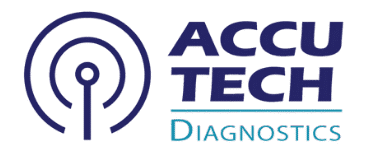Rare Event Detection
"Rare Event Detection" in a diagnostic laboratory context refers to the identification of very infrequent but clinically significant cells, molecules, or signals within a much larger background of common or normal components. These "rare events" often hold critical diagnostic, prognostic, or therapeutic information that would be missed by conventional testing methods.
Why is Rare Event Detection Important?
The challenge lies in the needle-in-a-haystack problem: finding a tiny number of crucial targets amidst a vast sea of irrelevant material.
Early Disease Detection
Many serious diseases, especially cancers and infections, begin with a very small number of abnormal cells or pathogens. Detecting these early can enable timely intervention and improve outcomes.
Minimal Residual Disease (MRD) Monitoring
After cancer treatment, detecting even a few remaining cancer cells can predict relapse, allowing for early intensification of therapy.
Personalized Medicine
Identifying rare genetic mutations or specific cell types that dictate response to targeted therapies.
Non-Invasive Diagnostics
Detecting rare biomarkers in easily accessible body fluids (e.g., blood, urine) can replace more invasive procedures.
Transfusion Medicine/ Transplantation
Identifying rare antibodies or specific cell types that could lead to adverse reactions or rejection.
Challenges in Rare Event Detection
- Low Abundance: The target is present in extremely low concentrations.
- High Background: A large number of normal or irrelevant components can obscure the rare event.
- Technical Sensitivity: Assays must be exquisitely sensitive and specific to avoid false positives (detecting normal as rare) and false negatives (missing the rare event).
- Sample Volume: Often requires processing large volumes of sample.
- Cost and Complexity: Many advanced rare event detection methods are expensive and require specialized equipment and expertise.

Key Laboratory Methods for Rare Event Detection
Diagnostic laboratories employ advanced technologies and strategies to overcome these challenges:
- Flow Cytometry (especially for Rare Cell Populations):
- Principle: Highly sensitive optical technology that analyzes individual cells in a fluid stream. By tagging specific cell types with fluorescently labeled antibodies, rare cells can be identified and quantified even if they constitute a tiny fraction of the total cell population.
- Application:
- Minimal Residual Disease (MRD) in Leukemias/Lymphomas: Detecting residual malignant cells (e.g., 1 cell in 10,000 or 100,000 normal cells) after chemotherapy.
- Paroxysmal Nocturnal Hemoglobinuria (PNH): Detecting rare clones of red blood cells lacking specific surface proteins.
- Fetal Cell Isolation: Detecting rare fetal cells in maternal blood for non-invasive prenatal diagnosis (though largely replaced by cell-free DNA methods for common aneuploidies).
- Molecular Methods (PCR-based and Sequencing-based):
- Principle: Amplify and detect specific DNA or RNA sequences, allowing for the identification of rare mutations, pathogens, or gene expression patterns.
- Methods:
- Quantitative PCR (qPCR) / Real-time PCR: Can detect and quantify very low copy numbers of DNA/RNA.
- Digital PCR (dPCR) / Droplet Digital PCR (ddPCR): Divides a sample into thousands of tiny partitions, allowing for absolute quantification of individual DNA/RNA molecules. This is exceptionally sensitive for detecting extremely rare mutations or low viral loads.
- Next-Generation Sequencing (NGS) (especially deep sequencing): Sequencing to very high depth can detect low-frequency mutations or rare microbial species in a mixed sample.
- Application:
- Circulating Tumor DNA (ctDNA) Detection (Liquid Biopsy): Identifying cancer-specific mutations in cell-free DNA fragments in blood, even if they are a tiny percentage of total cell-free DNA.
- Early Detection of Infectious Agents: Detecting very low viral loads (e.g., HIV, CMV, HBV) or bacterial DNA in clinical samples.
- Detection of Drug Resistance Mutations: Identifying rare mutations in pathogens (e.g., HIV, TB) or cancer cells that confer drug resistance.
- Enrichment Techniques (Pre-analytical Step):
- Principle: Physically or chemically separating the rare target cells/molecules from the abundant background.
- Methods:
- Immunomagnetic Separation (e.g., MACS, CTC enrichment): Using antibody-coated magnetic beads to bind and pull out specific cell types.
- Density Gradient Centrifugation: Separating cells based on their density.
- Microfluidics: Devices that precisely manipulate tiny fluid volumes to isolate rare cells.
- Application:
- Circulating Tumor Cells (CTCs): Isolating intact cancer cells from blood for further analysis.
- Fetal Cell Enrichment: Concentrating fetal cells from maternal blood.
- Advanced Microscopy Techniques:
- Principle: Specialized microscopy that allows for the visualization and analysis of rare cells or structures with high resolution and sensitivity.
- Methods: Confocal microscopy, fluorescence microscopy with specific stains.
- Application: Identifying rare abnormal cells in cytology smears or tissue sections that might be missed by routine screening.
- Mass Spectrometry (for specific rare molecules):
- Principle: Can identify and quantify very low concentrations of specific proteins or metabolites.
- Application: Detecting rare protein biomarkers in early disease states, or specific drug metabolites.
Clinical Applications of Rare Event Detection
The challenge lies in the needle-in-a-haystack problem: finding a tiny number of crucial targets amidst a vast sea of irrelevant material.
Challenges in Rare Event Detection
- Oncology:
- Liquid biopsies for early cancer detection, recurrence monitoring, and resistance mutation identification.
- MRD testing in hematological malignancies.
- Detection of specific chromosomal translocations or gene fusions in solid tumors.
- Infectious Diseases:
- Monitoring viral load in chronic viral infections (HIV, HBV, HCV).
- Detecting drug-resistant strains of bacteria or viruses.
- Early diagnosis of sepsis by detecting low levels of bacterial DNA.
- Prenatal Diagnostics:
- Non-invasive prenatal testing (NIPT) for fetal aneuploidies using cell-free fetal DNA.
- Transfusion Medicine:
- Detecting very low levels of antibodies in patient plasma that could cause transfusion reactions.
- Immunology:
- Diagnosing rare immunodeficiency syndromes by quantifying specific lymphocyte subsets.
Rare event detection is a rapidly evolving area in diagnostic medicine, continuously pushing the boundaries of what can be identified, leading to earlier diagnoses, more precise treatments, and improved patient outcomes.


